Storing and inheriting Bitcoin.
Episode V. Block height: 773000. A durable deep cold storage and guidance for your heirs are key when it comes to Bitcoin self-custody. Make it yourself. A step-to-step guide.
The week in Bitcoin and Macroeconomics
Buenos Aires: Argentina’s inflation rate just hit 95%, its highest rate in more than 30 years and almost doubled versus a year ago, further eroding consumer’s dwindling purchasing power.
Genesis: Crypto lender Genesis, latest to file for bankruptcy. Genesis is part of the Digital Currency Group (DCG), a conglomerate of more than 200 crypto-focused businesses led by Barry Silbert.
San Salvador: Lonely Planet has released «Best in Travel 2023» a list of the most anticipated destinations to visit. El Salvador was included in the «Learn» category.
New Delhi: Indian Central Bank Chief insists that Bitcoin should be banned and warns «It will undermine the authority of RBI (Reserve Bank of India). We will lose control over the money printer».
Abuja: Nigerian central bank introduces new cash withdraw limits (20,000 naira ~ $44 daily) and announced that all old naira bills will be worthless at the end of January. Now, Nigeria is leading the «How to buy Bitcoin» search worldwide.
Well, I'm going to El Salvador, who just got nominated for «Best in Travel 2023», very soon (Hit me up if you are around). In this context, I have been concerned about the storage of my Bitcoin in general. Not because I think El Salvador is a dangerous country, but I just realized that something unexpected can always happen in life. Either to you personally (Death, Alzheimer, …) or to your Bitcoin storage (Fire, damp, …).
Is your Bitcoin seed storage robust to withstand external influences? Does anyone know about your Bitcoin? Do they know how to take control of it in case of emergency? When I asked myself these questions, it hit me like a blow. F*** am I unprepared for unexpected events, probably losing all my Bitcoin if an emergency hits, because there are no precoutions in place!
That's the reason I want to make you aware of the importance of storing your Bitcoin properly AND thinking about a plan to prepare your heirs to take control of the Bitcoin if emergency hits. Besides, I’ll show you how to build a durable, cheap and indestructible Bitcoin seed storage yourself. Sounds amazing? Let’s dive in! But first things first.
Key management is key
As some have already painfully discovered in 2022, it is crucial to store Bitcoin yourself. “Not your keys, not your coins” is one of the most important mantras in the Bitcoin community. We have already covered the importance of self-custody in the episode «Take back control over your Bitcoin. Now!». In this episode we will build on this knowledge, so check it out if you missed it. Now we start with some basics real quick by clarifying a few terminologies:
A Bitcoin-Wallet
Simply speaking, you can imagine a Bitcoin-Wallet like an electronic purse, and the standard user interface to the Bitcoin network.
Basically, you can divide digital wallets into Custodial and Noncustodial-Wallets. The difference is essentially the exercise of control over the wallet. With Custodial-Wallets, a third party exercises control, comparable to your bank account, where the bank has ultimate control over the account. With a Noncustodial-Wallet, you exercise control yourself, comparable to cash in your purse.
Further, you can distinguish between Hardware- (cold) and Software-Wallets (hot). Hardware-Wallets are also called cold storage because they themselves are not connected to the internet, while Software-Wallets are. For long-term storage of Bitcoin, I would definitely recommend a Hardware-Wallet, because you eliminate the risk of hacks over the internet.
It should also be noted that the Bitcoin are technically not stored in your wallet, regardless of cold or hot. Moreover, they never leave the Bitcoin blockchain. Your wallet stores your Bitcoin private key (more in a minute), which gives you access to your Bitcoin. This means, if you lose your Hardware-Wallet, for example, or if it breaks or the manufacturer goes bankrupt, you can restore access to your Bitcoin by entering your private key. A private key is created, when you set up a Hardware-Wallet for the first time.
Bitcoin private key
A Bitcoin ‘private key’ or ‘seed phrase’ is basically a randomly chosen number, often expressed in 12 or 24 words, a very complex password, so to speak. The person who has the private key also has control over the Bitcoin associated with that key.
When setting up your Bitcoin-Wallet, you have to write down 12 or 24 words. Don’t store them digitally! Either you write them down physically or, even better, stamp it on something that is more resistant to external influences, such as steel (I’ll show you in a minute). Needless to say, that you shouldn’t share your Bitcoin private key with anybody!
Another thing to keep in mind: The private key is created directly on your Hardware-Wallet. This means that the manufacturer does not have a copy of your private key. In other words, if you lose it, it will be lost forever. No customer support. Because the private key is created directly on your own wallet, it is very important that you purchase your wallet directly from the manufacturer. Preferably from a manufacturer that uses Bitcoin-only open source software. Because only then can you really rule out that the device has not been tampered with.
Key-Storage
As you may have noticed, storing your private key is especially important. In this regard, you have several options: You can just remember your seed-phrase, then you have a so-called Brain-Wallet. You can probably imagine what disadvantages are associated with this. Another option would be writing down your private key on paper, creating a so-called Paper-Wallet. However, the biggest disadvantage is that your wallet is heavily exposed to external influences. For example, if you keep it in the basement, and it is damp, or you keep it in your room and your house burns down, you will lose access to your wallet. You could also come up with the idea of keeping your Paper-Wallet in your bank vault. Well, this has the disadvantage that you are trusting a third party. Do you really have access to it in an emergency?
Moreover, Bitcoin was designed precisely not to trust anyone but yourself, so it would be best to have an seed-storage that you can store comfortably at home, but is also protected from outside influences. An easy yet durable way to store your private key would be to engrave it in metal. This way you protect it from external influences. Many providers offer so-called seed-plates made of steel. Of course, you can just order one. But in the following, I would like to show you how you can easily make multiple key storage in steel for only about 70 bucks. And its fun!
Deep cold storage, homemade
Bitcoin itself is on the pedestal of many thought leaders, including this idea. Therefore, credit to @econoalchemist. In the following, I will just write you a short summary and show you my personal journey. For a deeper dive, you can find his original post here.
This tutorial assumes that you already have your private key, that is, your 12–24 words. As already mentioned, you will basically get it when you set up your Hardware-Wallet. Instructions for this come from the manufacturer itself and are usually easy to follow. I currently use the Swiss made Hardware-Wallet called BitBox - Bitcoin only. Easy set-up with great customer support. Once you have your seed-phrase and all the hardware components, you're ready to go. So let’s get started: To build your own cold and resistant steel storage, you only need the following hardware components (For multiple back-ups):
A Hammer.
Blockmit washer jig.
Letter & Number Stamp Set (4 mm).
M8 Stainless Steel Washers (8 mm).
M8 Stainless Steel Wingnuts (8 mm).
M8 Stainless Steel Bolts (60 mm).
ADD ON: Tamper evident safe bags.
Proof of work
The value comes from the sweat. Start by simply placing the Blackmit Washer Jig on your work surface, place a washer in it, take the appropriate stamp and stamp with the hammer letter by letter into the washer. It is also very helpful to stamp the number of the word on top of it (1 CARL, 2 MENGER, …), because to restore access to your Bitcoin you need to type the word in the correct order. Yea, indeed this takes some time, but you can use the time and try to recognize your words.
When you have stamped all the words on the washers, then you can wind them on the bolt and close them with the wingnut. Congrats, you now have a key-storage well protected against external influences. To prove this to you, I let mine stew in my oven, right in the fire, for 12 hours. (I just burned 5 washers for display purposes only. Usually you have 12 or 24, but the result is the same). As you can see, everything is well readable. The same goes with salt water or the like. But don’t trust, try it yourself!
ADD-ON: I would also recommend that you make two identical seed-storages at once, and then keep them in two different locations. Also, it is very helpful if you put the metal storage in a safe bag, so you can always tell for sure if someone has discovered your private key. If someone opens your safe bag, nobody can close it without leaving traces.
Inherit Bitcoin
Great, now your Bitcoin are protected from outside influences. One more thing: What happens if you have an emergency and nobody knows about your Bitcoin wallet or your seed-storage? Well, your Bitcoin are probably a donation to the public. That's why I think it's important to include the people who will inherit your Bitcoin in case of emergency. You don't have to tell them your private key (yet), but at least tell them where to find it (with a cover letter) and give them a beginner-friendly guide on how to access your coins.
Most importantly: Don't make it too complicated! That's also why I'm not describing multi-sig and the like here, because I really think the biggest danger to your Bitcoin treasure is that your descendants won't know about it and/or won’t know how to access them. So let’s get more concrete. What can such an «Estate Plan» look like and what information should it contain?
Information about your assets
Information where to find those assets
Information about your wallets
Access information to your wallets
Cover letter
The easiest way to get this information to your descendants is to draft a cover letter, where you briefly outline general information about your assets and how to access them. In this cover letter, it might also be useful to name a trusted person with contact details, so that if your heirs have any problems, they can contact someone trustworthy, who knows already a bit about Bitcoin. Of course, the choice is of crucial importance. However, it is much better to have someone you trust, than your heirs have to pick a completely random person.
I also put a few books in each of my «Emergency Pack» so that my heirs are also intellectually stimulated. You can find the literature for this at the bottom, because knowledge is power. And always keep in mind, if your heirs don’t get it right:
“Lost coins only make everyone else's coins worth slightly more. Think of it as a donation to everyone.” - Satoshi Nakamoto
The End
That's it for this episode. Hopefully you could take some valuable knowledge from this one. I know it’s not a very sexy topic, but important to get this done right in case of emergency. Thanks for reading and see you hopefully in the next one (El Salvador special). Until then, remember: Storing Bitcoin properly matters. ₿ critical, ₿ informed, ₿ prepared. Yours,
Bitcoin «Emergency Pack» Books
[1] Marc Steiner, Bitcoin verwahren und vererben (German only).
[2] Andreas Antonopoulos, Mastering Bitcoin.
[3] Saifedean Ammous, The Bitcoin Standard: The Decentralized Alternative to Central Banking
[4] Knut Svanholm, Bitcoin: Independence reimagined.
[5] Yan Pritzker, Inventing Bitcoin: The Technology Behind the First Truly Scarce and Decentralized Money Explained

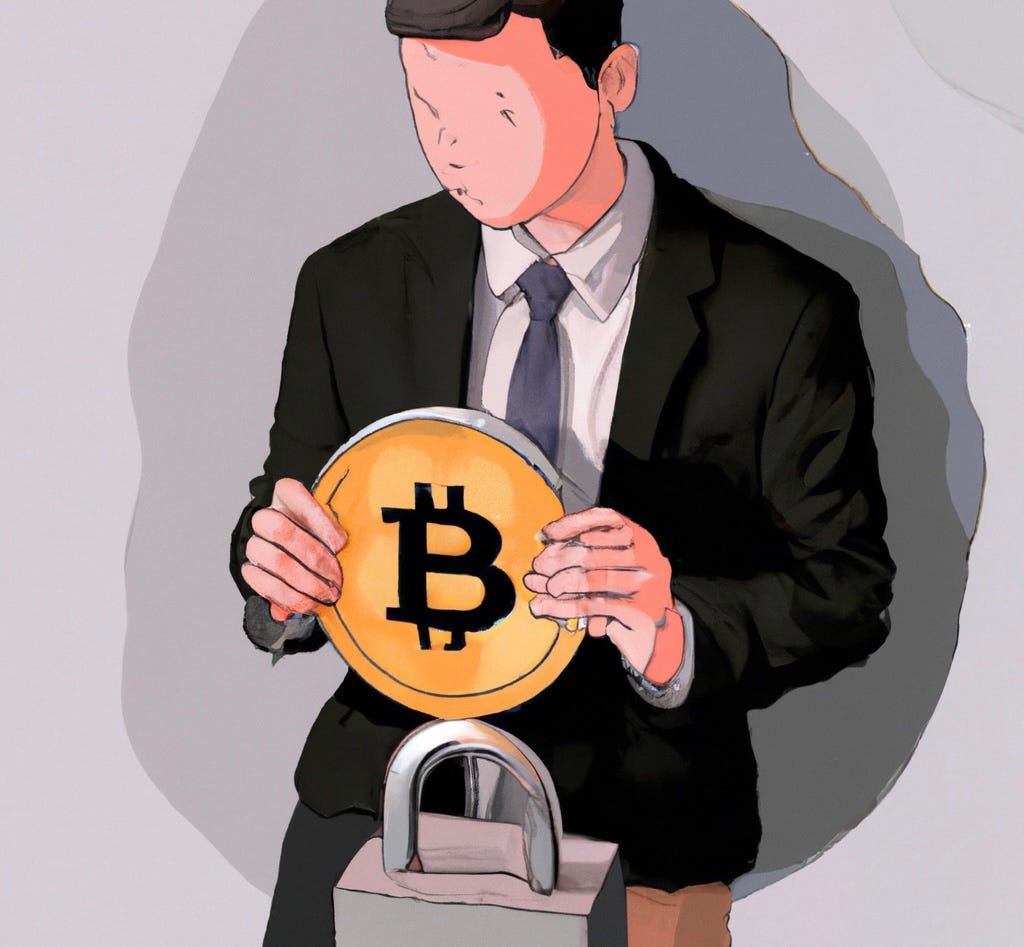

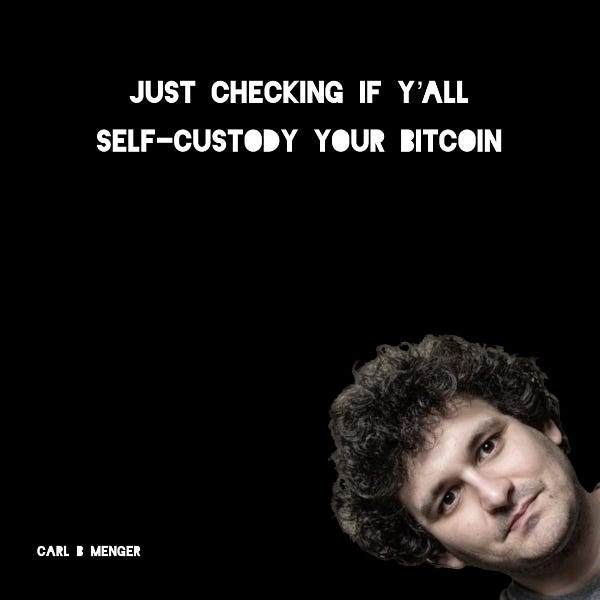

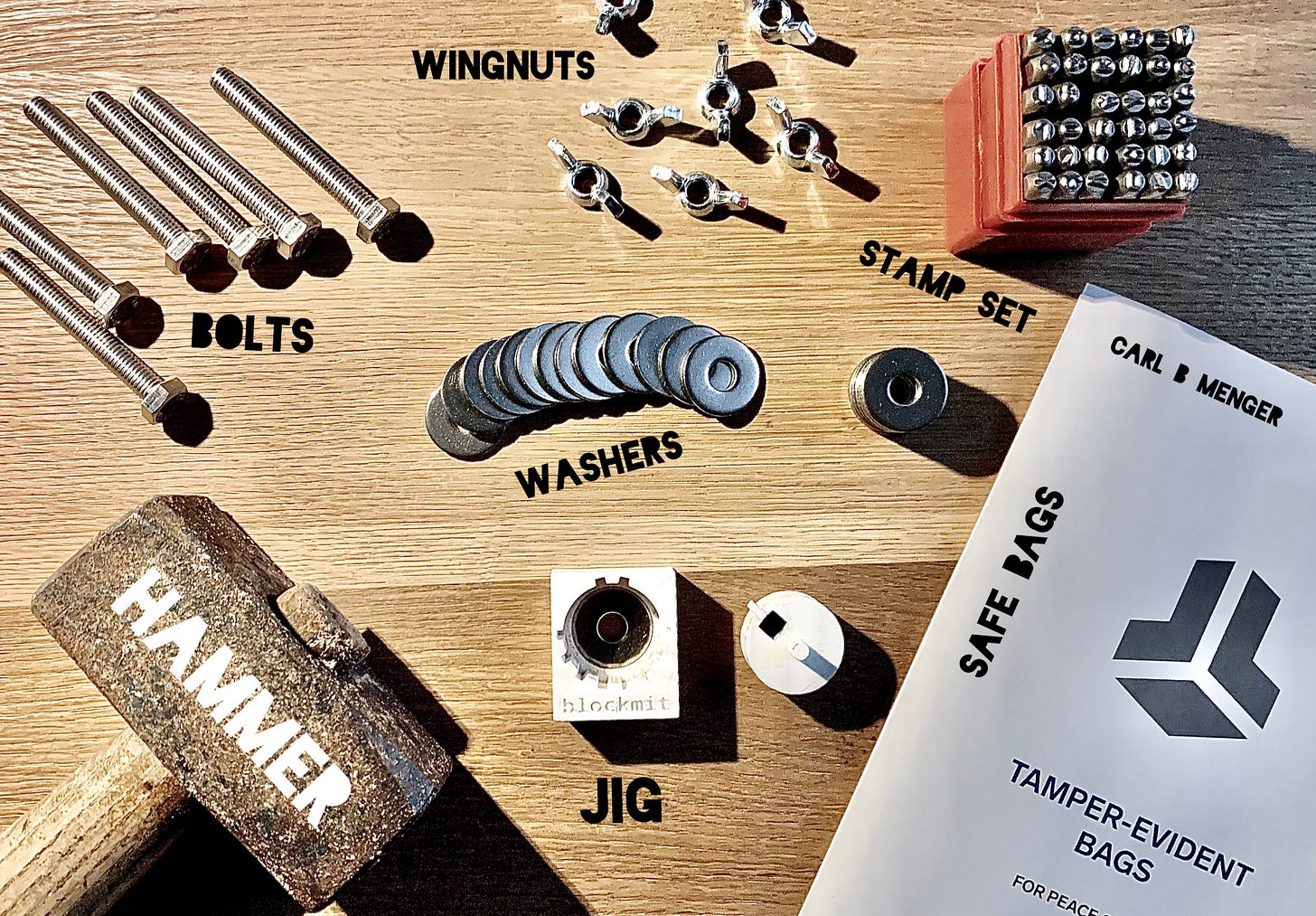
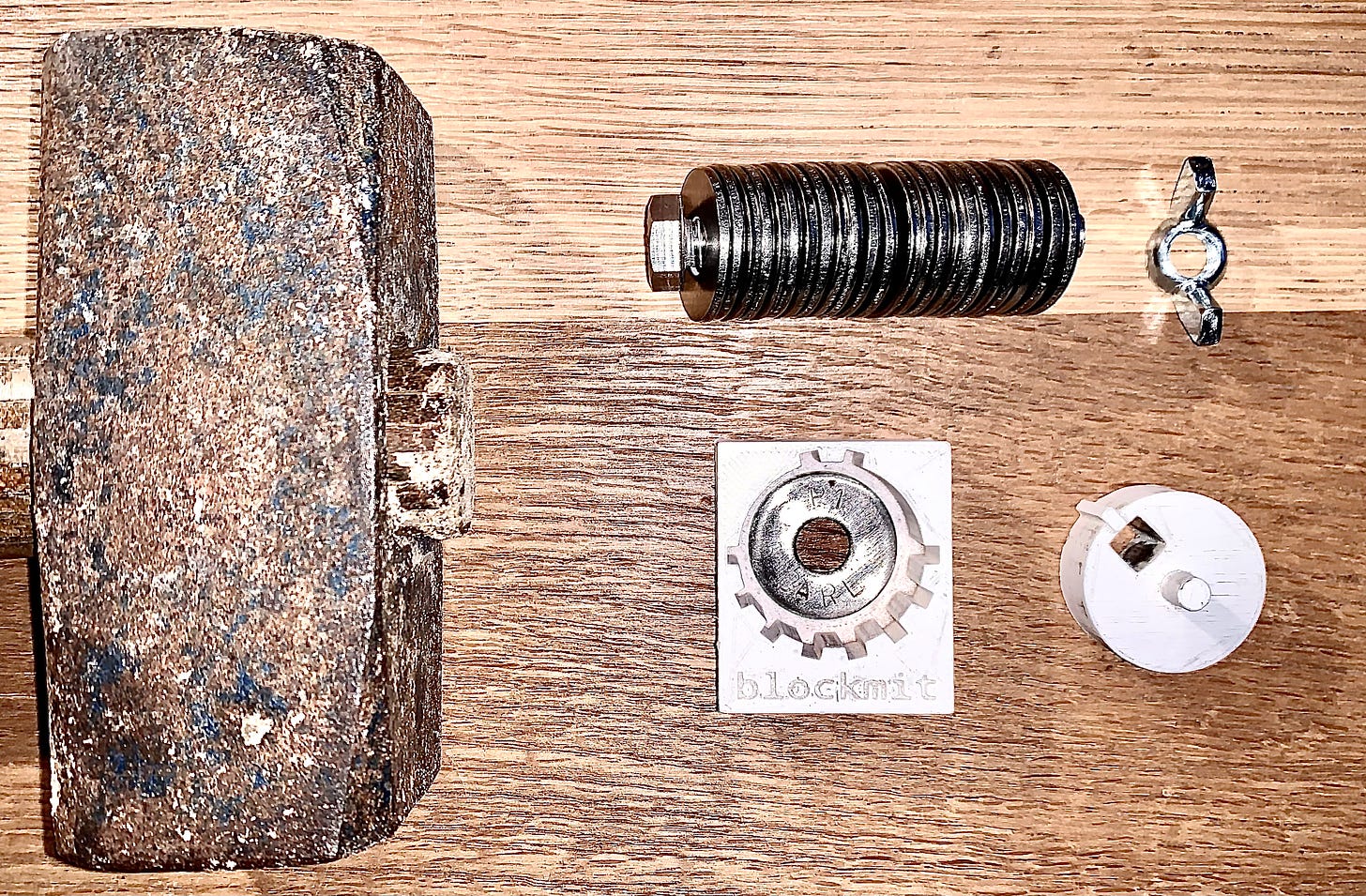
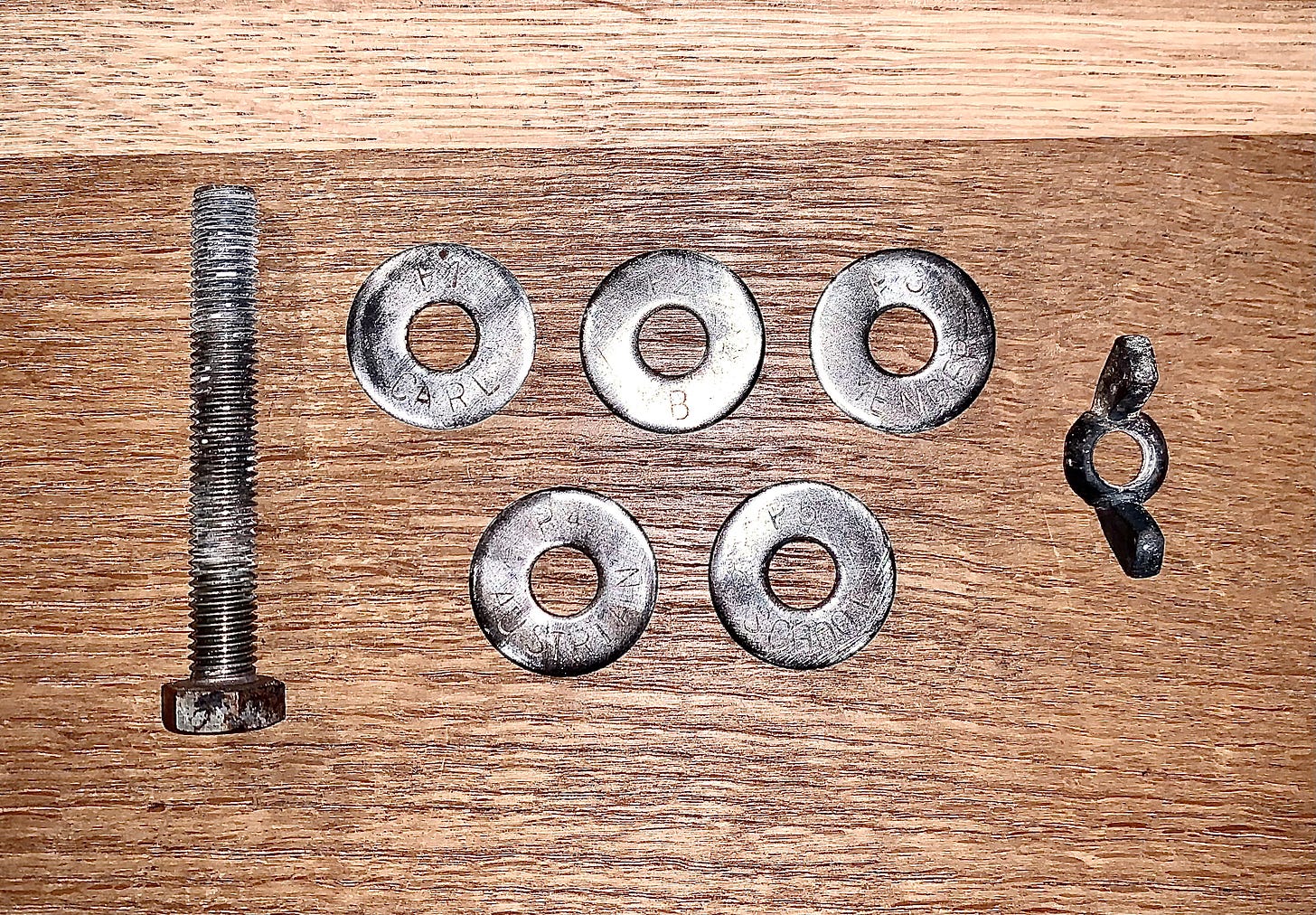

I was planning to inform my parents about the whole thing, and some informations on how to access funds if something happens to me. In BTC matters, I dont think there is any other more trustworthy person than ones parents.
Nice educational post! I will try the washer & bolt right away what a genius idea! One of my favourite methods would be to burry the bolt&washer in the garden under a tree or something. Element resistant and no one knows where it is.